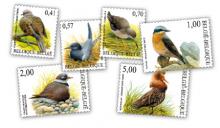Fischbestand im Doubs ist seit Jahren rückläufig
Urs Dublin blickt auf den Doubs und runzelt die Stirn. Durch den Kopf geht ihm «nichts Gutes». Sein Zustand bereitet ihm Sorgen. Und mit ihm vielen anderen Anglern, etwa der «Société des pêcheurs à la ligne du Doubs». Aber auch den vielen Naturliebhabern, die sich dafür einsetzen, dass zum Doubs, einem der naturbelassensten Flüsse Europas, Sorge getragen wird. Dies zu Recht. Denn das Ökosystem des Flusses wird gleich von mehreren Seiten her beeinträchtigt: Durch variable, schnell ändernde Pegelstände des Wassers sowie durch um sich greifende Krankheiten wie den Saprolegnia-Pilz. Aber auch Gewässerverschmutzungen und Mikro-Verunreinigungen tragen das ihre dazu bei. «Wenn es so weitergeht», so schreibt der ortsansässige Anglerverein, «werden unsere Flussbewohner in nicht allzu weiter Zukunft nur noch eine ferne Erinnerung sein, und unsere Kinder werden Fische aus den Büchern und von den Angelfotos ihrer Eltern kennen.»










